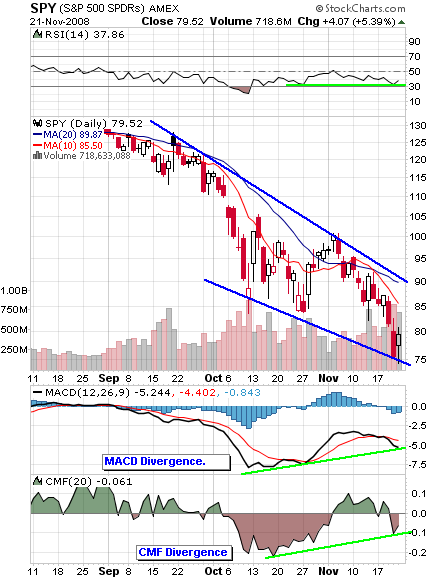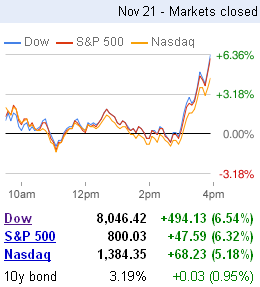ETFs are exchange-traded-funds. The best place to get information is investopedia.com. An exchange traded fund tracks an index, commodity, or a basket of assets like an index fund. This explanation is from investopedia.
To explain it a little, an ETF trades like a stock on an exchange. You buy/sell the ETF just like you buy/sell a stock thru your broker. You use the same tools. You chart the ETF. You analyze the technical indicators, and you can also trade options on the ETF. It depends on the ETF, but most have option chains.
So how does it help you?
Very good question. First remember that an ETF can track an index or a commodity or a basket of assets. So you can have an ETF that tracks gold. Or tracks silver. If you hear from your friend that gold is spiking really nicely lately and you verify that thru your analysis then you have two options if you decide to be long on gold.
- Go down to the local store and buy some gold coins.
- Login to your brokers site and buy the ETF that tracks gold – GLD.
Here’s how Ameritrade’s explanation of this ETF reads:
The investment seeks to strive to reflect the performance of the price of gold bullion, less the Trust’s expenses. The Trust holds gold, and is expected to issue baskets in exchange for deposits of gold, and to distribute gold in connection with redemption of baskets. The gold held by the trust will only be sold on an as-needed basis to pay trust expenses, in the event the Trust terminates and liquidates its assets, or as otherwise required by law or regulation. The Trust is not managed like an active investment vehicle, and it’s not registered as an investment company under the Investment Company Act of 1940
That’s good because now instead of constantly making trips down to a physical shop with your gold coins, you simply buy/sell online thru your broker. Similarly, you can buy/sell silver and other commodities.
That’s an example of an ETF that tracks a commodity. What about one that tracks an index? Fret not!
If you see that S&P 500 Index is uptrending and you wish you could just ride the index as opposed to figuring out which stocks in the index are doing good or which stocks in general are doing good, then you could simply trade the ETF SPY. This ETFs seeks to duplicate S&P 500 Index’s performance. You can trade options on SPY bigger leverage.
So it benefits you by knowing that when an index is doing well, you can buy the ETF tracking the index’s performance. It won’t make you rich overnight. Consider that an index may fall 500 points but that’s typically 2-3% move. Options will give you bigger leverage.
Trading ETFs by definition doesn’t give you a big benefit in % returns. But it gives you a benefit in not having to guess the direction of your holdings. You can daytrade the ETF like any other stock for small or big gains.
You can trade options and daytrade options on ETFs also.


